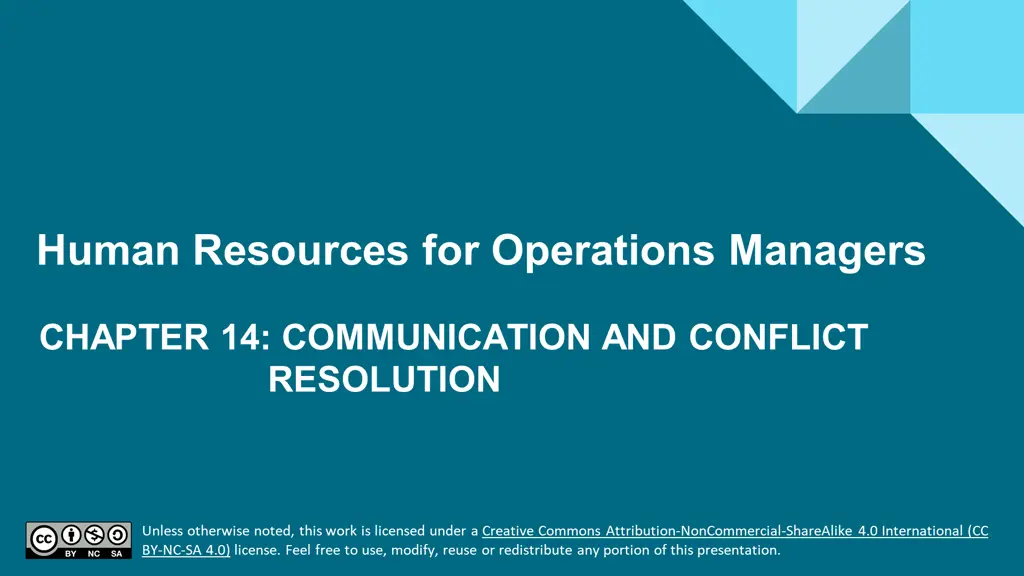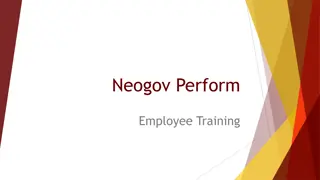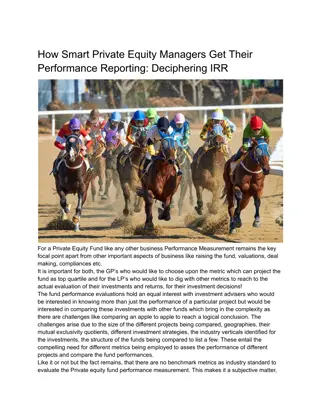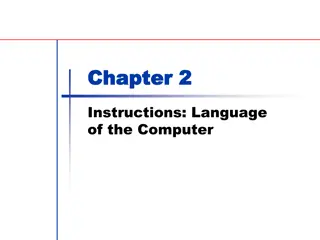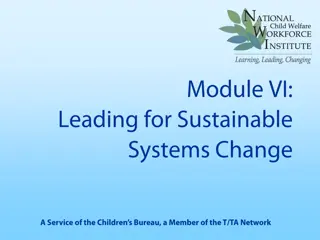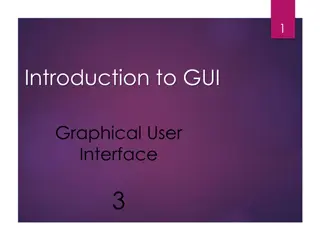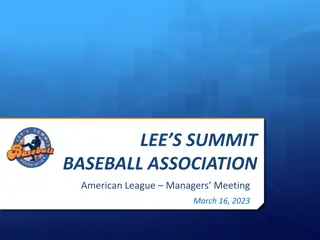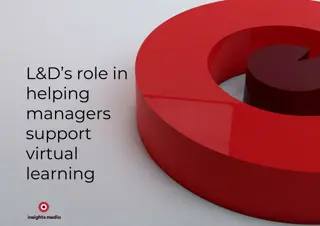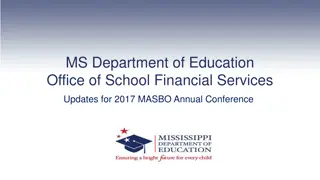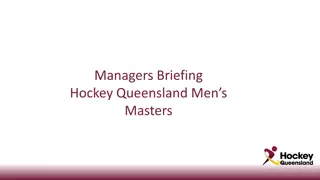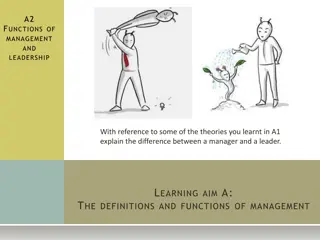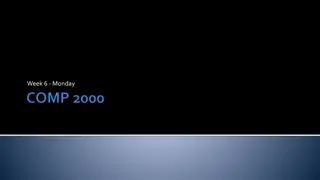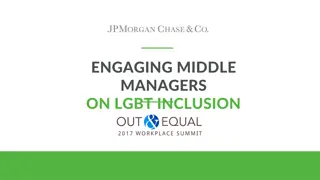Human Resources for Operations Managers
The impact of social media communication in the workplace, effective conflict resolution strategies, and delivering difficult messages.
Uploaded on Dec 22, 2023 | 1 Views
Download Presentation

Please find below an Image/Link to download the presentation.
The content on the website is provided AS IS for your information and personal use only. It may not be sold, licensed, or shared on other websites without obtaining consent from the author.If you encounter any issues during the download, it is possible that the publisher has removed the file from their server.
You are allowed to download the files provided on this website for personal or commercial use, subject to the condition that they are used lawfully. All files are the property of their respective owners.
The content on the website is provided AS IS for your information and personal use only. It may not be sold, licensed, or shared on other websites without obtaining consent from the author.
E N D
Presentation Transcript
Human Resources for Operations Managers CHAPTER 14: COMMUNICATION AND CONFLICT RESOLUTION Unless otherwise noted, this work is licensed under a Creative Commons Attribution-NonCommercial-ShareAlike 4.0 International (CC BY-NC-SA 4.0) license. Feel free to use, modify, reuse or redistribute any portion of this presentation.
Learning Outcomes Upon successful completion of this chapter, you will be able to: Explain how social media communication impacts the workplace. List effective conflict resolution strategies. Explain how to deliver difficult messages.
14.1 Communication In The Digital Age Developing conversational skills is hugely important by the time they enter a workforce mostly populated by older generations that grew up without smartphones, developed those advanced conversational skills the hard way by making mistakes and learning from them, and expect well-developed conversational skills of younger generations entering the workforce.
14.2 Electronic Written Communication I While working in Operations Management, you will be required to use electronic channels of communication. E-mail deserves a close look because it is the most widespread and established of the electronic forms. Since so much of our lives are wrapped up in electronic interaction, reviewing the netiquette principles established at the outset of the electronic communications revolution can actually help us move forward as we look at the newest and fastest communication channels, texting and instant messaging.
14.2 Electronic Written Communication II The Writing Process When creating an e-mail, it is important to consider your audience, the intended message and the desired outcome. Photo by Stephen Phillips - Hostreviews.co.uk, Unsplash License
14.3 Netiquette And Social Media I We create and curate personal profiles, post content and comments, and interact via social media as a normal part of both our personal and professional lives. How we conduct ourselves on the open internet can leave a lasting impression, one not so easily undone if it s regrettable.
14.3 Netiquette And Social Media II Virginia Shea s Rules of Netiquette offer helpful guidelines for online behaviour: Remember the human on the other side of the electronic communication. Adhere to the same standards of behaviour online that you follow in real life. Know where you are in cyberspace. Respect other people s time and bandwidth. Make yourself look good online. Share expert knowledge. Keep flame wars under control. Respect other people s privacy. Don t abuse your power. Be forgiving of other people s mistakes.
14.4 Traditional Written Communication I Traditional document forms that are still vital to the functioning of modern businesses. Despite origins as handwritten and typed hard-copy documents, letters, memos, reports, and proposals continue to prove their worth both in the form of printed hard copies and electronic documents shared by e-mail. Every professional should familiarize themselves with the conventions associated with each type of document so that they can use them to achieve their particular purposes.
14.4 Traditional Written Communication II Letters As one of the most formal documents you can send, a letter conveys a high degree of respect to its recipient. Sending a letter is your way of saying that the recipient matters Photo by Towfiqu barbhuiya, Unsplash License
14.4 Traditional Written Communication III Memos A memo (or memorandum, meaning reminder ) communicates policies, procedures, short reports, or related official business within an organization. Four Components of a Memo by Jordan Smith, CC BY 4.0
14.4 Traditional Written Communication IV Proposals A proposal is a business document that makes a case for your product or service to a hiring company or funding organization. Knowing how to write a proposal is a vital skill in business because organizations seeking services from business-to-business contractors will often put out a request for proposals, or RFP, to select the right contractor to perform the work. Photo by Alexander Grey, Unsplash License
14.5 Delivering Difficult Messages I Just as in life, the workplace isn t always sunny. Sometimes things don t go according to plan, and it s your job to communicate about them in a way that doesn t ruin your relationships with customers, coworkers, managers, the public, and other stakeholders. When doing damage control, bad-news messages require care and skillful language because your main point will meet resistance.
14.5 Delivering Difficult Messages II The Seven Goals of Bad-news Messages 1. Be clear and concise to avoid being asked for additional clarification. 2. Help the receiver understand and accept the news. 3. Reduce the anxiety associated with the bad news as much as possible by expressing sympathy or empathy. 4. Maintain trust and respect between you and your audience to ensure the possibility of good future relations. 5. Deliver the bad news in a timely fashion in the appropriate channel(s). 6. Avoid the legal liability that comes with admitting negligence or guilt. 7. Achieve the designated business outcome.
14.5 Delivering Difficult Messages III Organizing an Indirect Bad-news Message Key to avoiding misunderstandings when delivering bad news, then, is the following four-part organization: 1. Buffer 2. Justification 3. Bad news + redirection 4. Positive action closing
14.6 Non-verbal Communication I Nonverbal communication is the process of conveying a message without the use of words. It can include gestures and facial expressions, tone of voice, timing, posture and where you stand as you communicate. Nonverbal communication makes up 93% of our communication, (Steemit, 2017)
14.6 Non-verbal Communication II Types of Non-verbal Communication Eight types of non-verbal communication are: 1. Body language 2. Space or Proxemics 3. Paralanguage 4. Time or Chronemics 5. Physical Characteristics 6. Touch 7. Artifacts 8. Environment
14.6 Non-verbal Communication III Developing Your Non-verbal Communication Skills Nonverbal communication is an important aspect of business communication, from the context of interpersonal interaction to a public presentation. It is a dynamic, complex, and challenging aspect of communication. You are never done learning and adapting to your environment and context, and improving your understanding of nonverbal communication comes with the territory.
14.6 Non-verbal Communication IV Active Listening "The steps in the listening process' by Jordan Smith, CC BY 4.0
14.7 Conflict Resolution Strategies I Conflict Resolution Conflict arises everywhere communication occurs and can be very costly. Effective communicators can predict, anticipate, and formulate strategies to address conflict in order to successfully resolve it. How you choose to approach conflict influences its resolution. Conflict can be cognitive or affective.
14.7 Conflict Resolution Strategies II Conflict Management Skills When conflict is serious enough that it causes a rift within the workplace culture, the kind that pollutes the work atmosphere and threatens irreparable damage, a methodical, collaborative approach to conflict resolution can help lead to an amicable solution. Some conflict management options include: Confront and Problem Solve Reframing: Appeal to Third Party Negotiation
14.8 Key Takeaways Advanced communication skills, whether written or verbal, will be part of your success in Operations Management. You will be required to send e-mail on behalf of your organization, lead meetings and write policies for your department. You will also need to navigate the world of social media as it can be both a friend and a foe of your company. You will need to deliver difficult messages and resolve conflict in the workplace. Taking professional development courses to build your communication and conflict resolution skills will help you navigate the day-to-day expectations of your role in Operations Management.
